Identify Real Cashmere
Cashmere is cuddly soft, offers pleasant thermal protection and yet is light and breathable. In short, the feel is simply unique. It is no wonder that many women and men would like to call at least one such piece of clothing their own.
Cashmere wool belongs to the noblest and most pleasant materials at all. But for this, you also have its proud price. And that is well justified if you consider the work that is behind the production.
How precious Cashmere wool is faked?
How to identify Cashmere counterfeits? Many shops sell cashmere sweaters – some sweaters cost only 70$. On the Internet they are even cheaper. But cashmere is so valuable and rare, isn’t it? How can that be? Is it because of the quality?
The quality of cashmere is strongly dependent on the origin of the product, but also on the fineness and fiber length of the material. Long and fine cashmere fibers are used for high-quality sweaters.
If short fibers are used for production, sweaters tend to pill!
Short cashmere fibers are one reason why cashmere sweaters can sometimes be sold so cheaply.
Synthetic Cashmere counterfeits
Also some manufacturers cheat. They mix in fibers which are not cashmere and cost considerably less! Very cheap counterfeits consist mainly of viscose.
Identifying the difference between cashmere and viscose is more difficult than it seems. Both fibers are remarkably soft. Cashmere is significantly more expensive, more durable and much warmer than viscose.
Both viscose and cashmere can produce very soft fabrics. But cashmere is quite matt, without shine or shimmer. Viscose fibers have a remarkable sheen, especially when examined in strong light. Viscose fibers rarely tend to pill. 1
Knowing how to identify cheap cashmere counterfeits may protect you from being a victim of retail fraud.
Most cheap cashmere fakes are made of viscose or other synthetic fibers. Cashmere fabric is rather matt, while viscose has a strong shine or shimmer – especially when you examine the fabric in strong light.
In “high-quality” counterfeits, fine wool is added, for example from sheep, or silk. Manufacturers who cheat treat hard wool fibers with softeners such as silicone so that they feel almost like cashmere.
{ “@context”: “https://schema.org”, “@type”: “Article”, “mainEntityOfPage”: { “@type”: “WebPage”, “@id”: “https://www.worlds-finest-wool.com/how-to-identify-cashmere-counterfeits/” }, “headline”: “Money Saving Tips On How To Identify Cashmere Counterfeits”, “image”: [ “https://www.worlds-finest-wool.com/wp-content/uploads/2020/02/cashmere-counterfeits-featured.jpg” ], “datePublished”: “Feb 9, 2020 at 23:17”, “dateModified”: “Feb 9, 2020 at 23:17”, “author”: { “@type”: “Person”, “name”: “Pixel4You” }, “publisher”: { “@type”: “Organization”, “name”: “World’s Finest Wool”, “logo”: { “@type”: “ImageObject”, “url”: “https://www.worlds-finest-wool.com/wp-content/uploads/2020/10/LOGO-SHEEP-interlace.png” } }, “description”: “How To Identify Cashmere Counterfeits? ★Synthetic counterfeits✓ Wool Counterfeits✓ The Price✓ The Label✓ The Burning Test✓ The Fabric✓ The Origin✓” }
Cashmere Counterfeits – Hard to recognize even for experts
Sheep’s Wool has more extreme dandruff tips than cashmere. Producers use the help of enzymes to gently remove these dandruff tips, so even under a microscope normal wool looks similar to cashmere. The sheep’s wool therefore feels as soft as cashmere and looks very similar to the noble fabric. Even for experts, it is very difficult how to identify cashmere counterfeits.
To identify pure cashmere fibers and verify if no other substances have been added, you need expert knowledge and a raster electron microscope – if you want to be 100% sure!
Each fiber has a topographic fingerprint and it’s surface structures are different.
The dandruff tips of cashmere fibers are mostly bamboo-like and, at 0.4 micrometers, half as thin as those of sheep’s wool.
In addition to the flake shape, medium fiber fineness is an important criterion. A sample with an average diameter of more than 20 micrometers can never be classified as cashmere because its upper limit is 19 micrometers.
How to tell real Cashmere
But even experts are astonished how good the counterfeiters are in chemically modifying foreign fibers and how difficult it is to identify Cashmere counterfeits.
Therefore, caution should be taken with supposedly inexpensive cashmere products. Good quality is usually not available at bargain prices. A high-quality woolen sweater is then the better choice.
Even for experts, chemically treated sheep's wool can hardly be distinguished from real cashmere. As a layman it is almost impossible to distinguish wool that has been modified with elaborate procedures from pure cashmere.
Useful tips on how to tell real Cashmere and identify Cashmere counterfeits
But that doesn’t mean that there are not a few things you can use to test the quality of cashmere clothing yourself! The following tips can tell you whether it is a high-quality cashmere original or only a cheap fake product!
The Price
A cashmere goat produces just 100-150 g of wool per year, which can be processed after the sorting and cleaning process. These fine hairs come from the cashmere goats, which mainly live in highland mountains.
In spring they are not sheared, but only the fine undercoat hair is combed out. The fluff still mixed with the coarse top hair must be separated afterward with much effort by machine. For a sweater, you need the down of three to five goats.
Cashmere wool is a rare and expensive luxury fiber. The worldwide production of cashmere raw material is only about 1% of the total production of sheep’s wool for apparel; the prices of fabrics and garments must reflect this exclusivity.
Cashmere wool is therefore very expensive as raw material and a low price for cashmere products is more than unlikely.
If a trader offers cashmere clothing at a regular price of less than 100$, this product cannot realistically be real cashmere, as the trader would make losses. Prices from 200 Euro for a cashmere sweater are more meaningful.
The Label
The most obvious thing is to take a look at the label. Is it manufactured by a trustworthy brand. Does the label look like the manufacturers original label?
How exactly does the manufacturer take it with the material specifications? Material specifications such as “70% cashmere, 30% silk” or “100% cashmere” or “pure cashmere” are correct. On the other hand, statements such as “100% Pashmina” are suspicious, as Pashmina is neither a wool nor a commonly used textile label.
Nevertheless, a high cashmere content is still significantly better than a garment that has a “cashmere content” according to the label.
If no information on the actual fiber content (in percent) is available, this is a violation of the law – and this applies to all countries in the world!2
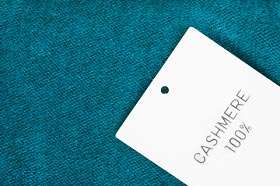
The Burning Test
To find out if a synthetic fiber has been added, some people swear on the burning test.
If you want to perform this test, please only do it over a sink where water is available!
You need to carefully remove several fibers from the clothing from a place where it won’t be noticed. Wind the fibers tightly around one end of a metal wire that can’t burn.
Now light them with a cigarette lighter flame and sniff at the smoke from the fibers as they burn.
Animal fibers – wool, cashmere, merino, and silk – all smell like burning feathers, with a sharp hint of burning sulfur. They also form a tiny firm black ball of ash but you can crush it between your fingers when it has cooled down!
Oil-based fibers burn with a smoky black flame, they form a tiny sticky black ball that’s at about 400° F and can cause deep skin burns. When it’s cold you can’t crush it!
For more detailed information on the Burning Test and how to distinguish wool from synthetic fiber please look up the article: How can you tell that it’s Real Wool >

How can you tell that it is real wool
Burning Test – How different Fibers burn:
| Natural Fiber / Synthetic | Flame | Smell | Flammability | Firing Residue |
|---|---|---|---|---|
Cotton | bright flame | similar to burnt paper | burns very quickly, afterglows, glow can be reignited by careful blowing | whitish, light, finely spreadable ash |
Wool | only small yellowish white flame, burns down quickly | after burnt hair | extremely fast, especially with loose fine fibers, the flame extinguishes easily | charcoal-like friable, easily pulverized ash residue |
Silk | Like Wool | Like Wool | Like Wool | Like Wool |
Polyethylene | bluish glowing inside | like candle wax | Quickly Flammable | practically no residues, melts – slight traces of soot |
Polyamide | blue flame with yellowish edge, not sooting | like fingernails | melting, then burning, foaming and creating brown-black edges | glassy, yellow to dark stringy fused pearl |
Polyester | indefinite | melting, then burning | very hard melting pearl |
The Fabric
When you touch cashmere clothing for the first time, the surface should feel warm. At least you can tell very obvious counterfeits by the fact that they feel cool on the skin and shine slightly.
If the fabric is cold and slightly shiny, it is certainly viscose. This inferior synthetic fiber is often used in Turkish, Indian and Chinese imitations because it is easy to produce and very cheap. If, on the other hand, the fabric feels warm, then that speaks for cashmere!
Good cashmere clothing has a very close-meshed structure. Because the looser the meshes, the less wool was used and the more savings the manufacturer wants to make. So tightly woven fabric is a criterion that you can be quite meaningful.
Familiarize yourself with the real fabrics and be careful about bargains.
The Origin of CashmereWool
Often you can read that very cheap cashmere parts come from China and were produced under very bad conditions. It is more than unlikely that they are of high quality.
In truth, there are only a few countries left that produce Kashmir, almost everything comes from China and Inner Mongolia. Chinese producers have been able to process cashmere directly on site since the 1980´s.
Very little is done in Italy, England or Germany. Cheating takes place everywhere:
When buying and selling raw materials – when spinning yarns – even rejected goods are first sorted out and then added to correctly declared export goods before shipment.
So, origin is not a reliable indicator on how to identify cashmere counterfeits.
Pilling
What exactly is Pilling?
Pilling is the formation of small knots or fluffs on fabrics. The reason for this is loose fibers in the fabric that have dissolved. This is why fabrics with short fibers are particularly affected.
Synthetic fibers are more prone to pilling than natural fibers because they have a smooth surface and therefore detach more quickly from the fabric. Wool fabrics also produce nodules – the cause is mechanical friction.
The pilling effect is therefore particularly noticeable in areas such as the shoulders or under the arms.
Pilling is generally a sign of very short, inferior cashmere fibers. The longer the fibers, the better they can be held in the yarn. High-quality cashmere clothing consists of long cashmere fibers that are less susceptible to the pilling effect than short or mixed fibers. So the faster you notice pilling on your garment, the less real cashmere it may contain.
Finally, it should be noted again that it is almost impossible to distinguish genuine cashmere clothing as a layman from high-quality counterfeits. This requires expensive technology and a great deal of expertise. The demand for cashmere is growing, while the counterfeiters’ techniques are becoming more sophisticated. Especially in the domestic market in China, there is a lot of “trickery”.
Companies like the Swiss Fair Trade Cashmere have therefore started to maintain their own goat herds in China in order to control the entire supply chain. The best protection against counterfeits is to buy only from trustworthy dealers who have many years of experience in the cashmere trade.
Have a look at our Brands & Stores section to find a selection of reputable dealers with detailed information.
Hope we were able to answer your questions on how to identify cashmere counterfeits?
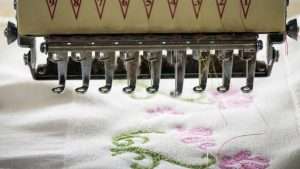
Best Practices for Machine Embroidery on Wool Fabrics

Getting Started with Spinning: An Introduction to the Art of Yarn Making

Most Amazing Places to visit in the USA in Winter

Style advice: identifying and styling body types

Most exclusive Dining in Fort Lauderdale
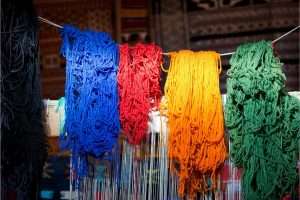
The Art of Spinning with Color: From Hand-Painting to Kettle-Dyeing, How to Dye Wool Yarn Like a Pro
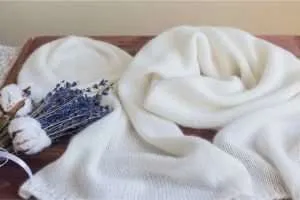
What to look for when buying Cashmere
- Cashmere vs. Viscose, Oureverydaylife, Michelle Powell-Smith (11/28/2017)
- HOW TO AVOID FRAUDS ON CASHMERE AND SUPERFINE WOOL GARMENTS, Cashmere and Camel Hair Manufacturers Institute. (last visited 02/10/2020)


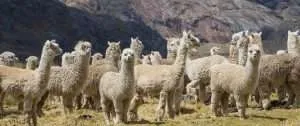
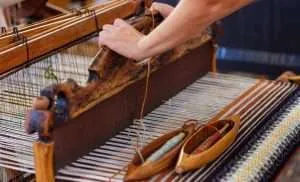





0 Comments